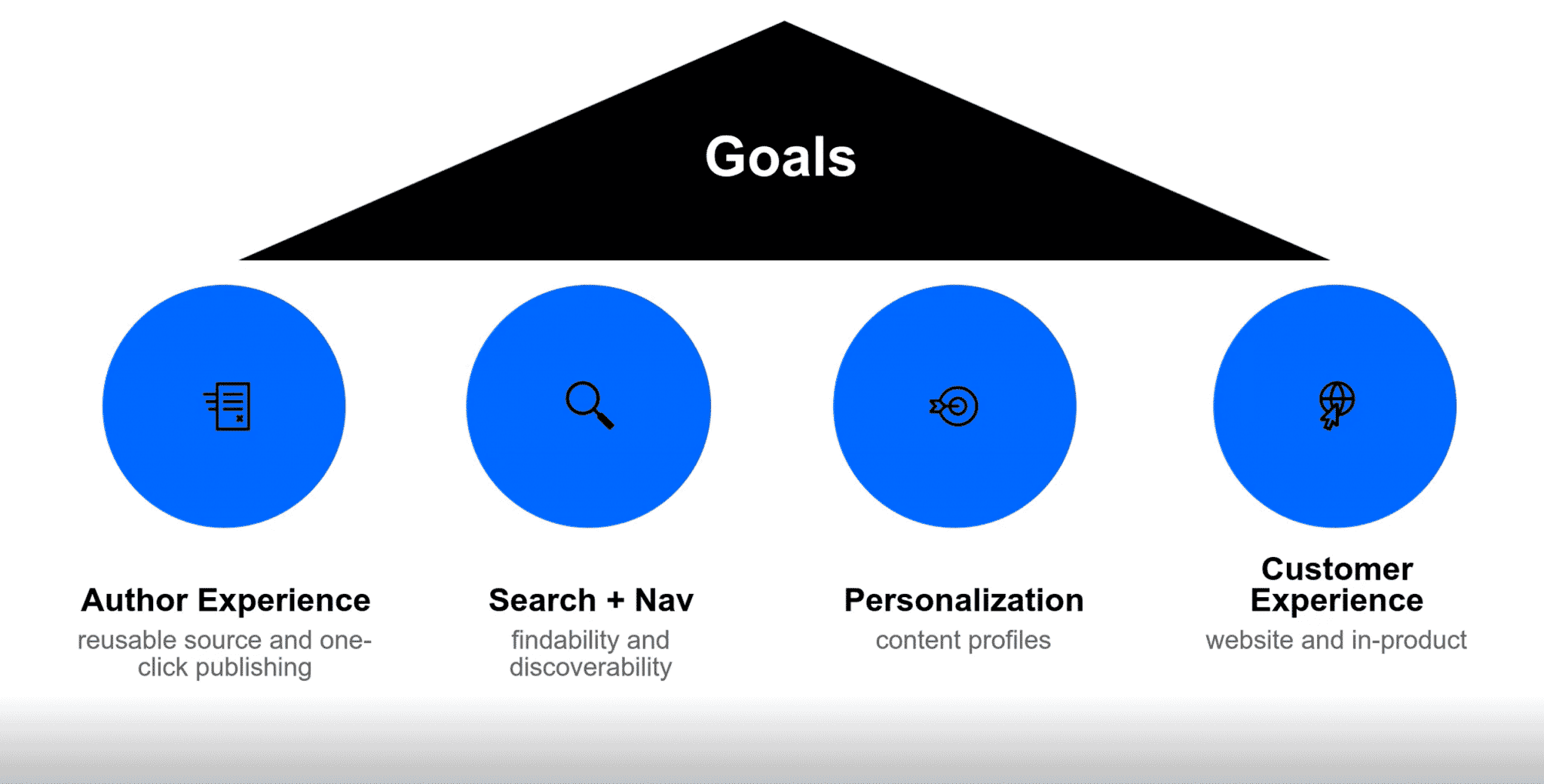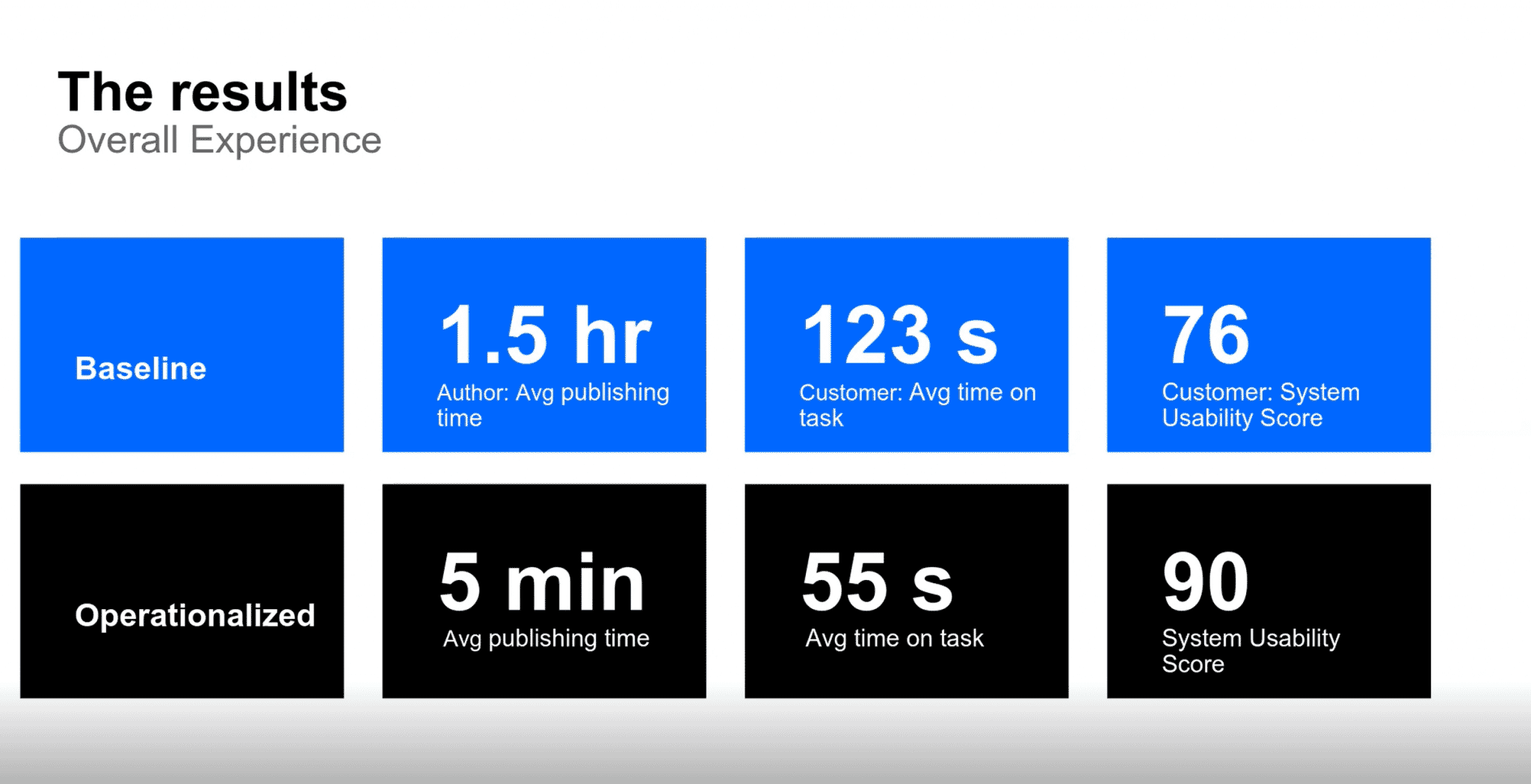Managing your own company’s content and documentation process is no easy feat, to say the least. Now imagine integrating and managing content from multiple company acquisitions and exponential product growth. And to add salt to the wound, the inherited content exists in all shapes and forms, making the task to unify and deliver it to customers that much more difficult. Sounds like a nightmare? Well, this is exactly what happened at DocuSign.
Gone are the days when DocuSign was a single-product company. Subsequently, they had to rethink and scale their content operation strategy and the tools they use to author, manage and dynamically publish self-serve content on modern platforms.
Delving more into the problem
DocuSign started off with a fairly common problem. There was a lot of product content that was being created such as user guides, quick start guides and release notes, all of which needed to be managed efficiently. As DocuSign grew by way of acquisitions, more and more content started to appear with its own set of requirements and issues.
In the end, DocuSign was left with content with inconsistent standards and various levels of content definitions. And to further complicate things, the source content was unstructured and delivered in Word, HTML, PowerPoint or something totally different.
Sure, DocuSign had some methods in place for publishing content, but it was mainly a system that required manual handoffs and a lot of time waiting for server pushes. And by the time the content reached the customer, there was a sense of disconnect, as there was no real path to navigate the content or an intuitive way to move between topics.
DocuSign sets its sights on solving the problem
Something had to be done about this and fast. This is when Dusty Clark and Deana Falk and other members from DocuSign set out to totally revamp their content operation strategy.
“In order to build toward an enterprise content experience, we needed to look at the entire journey and start connecting the dots.” Says Dusty Clark, Senior Manager of Content Operations at DocuSign.
DocuSign had to look at how they author content and the experience they provide to authors. They also had to look at how they publish and use metadata to support automation and personalization. And on the display side, they needed to analyze how customers can better find content and self-serve those needs.
“As we started to think about those foundational elements, we wanted to think about the full content experience starting with our author experience all the way through to our customer experience.” Says Deana Falk, Senior Information Architect at DocuSign.

DocuSign also had to address the problems surrounding findability and discoverability of their content, keeping in mind its goal of enhancing personalization via content profiles. Additionally, DocuSign looked at some other channels to deliver content to enhance user experience.
Systems used to assure success
DocuSign prioritized its systems with the long-term customer vision in mind. Before they were able to get to things like context sensitive information and product help, they needed to have a scalable authoring infrastructure in place.
DocuSign chose DITA implementation with MadCap IXIA CCMS to help it author, structure, standardize and manage its DITA structured content. The next step was to implement the Zoomin publishing platform to help aggregate content and use metadata to help them deliver content in various forms and on various platforms.
With those pieces in place, DocuSign was able to create a more personalized on-demand customer self-serve experience. It also provided DocuSign with the flexibility to use alternate display platforms or to modify content allowing them to publish it outside DocuSign’s current platform when necessary.
The proof is in the pudding
The next phase in the process was to validate these content experiences in reference to the new systems that were deployed. DocuSign wanted to validate these systems to ensure that the foundation that they were building truly improves the overall content experiences for both its authors and customers.
DocuSign looked at some KPIs they could track for both those experiences. They focused on average publishing time for their author experience and a usability score for their customer experience. For the authoring experience using IXIA CCMS and Zoomin, DocuSign was able to reduce the average publishing time drastically; from approximately 1.5 hours to just 5 minutes to publish a single publication.

When testing the customer experience, DocuSign decided to create a proof-of-concept site using Zoomin’s documentation portal. DocuSign then executed an unmoderated usability test with approximately 30 customers. They were given a task to locate a single topic on DocuSign’s existing portal and on the Zoomin documentation portal. The result was clear; a single task that took two minutes on DocuSign’s existing support center only took 55 seconds on the Zoomin portal.
And lastly, a system usability scale showed significant increase in overall usability score. DocuSign’s support center was ranking at 76%, while its proof-of-concept Zoomin documentation portal ranked at 90% with those same customers.
These numbers assure that DocuSign made a sound investment when choosing to revamp their content operation strategy to accommodate for an influx of new content all while enhancing the user experience of their authors and customers.
—
This blog was originally presented as a webinar by Dusty Clark and Deana Falk from DocuSign, and sponsored by our technology partner, Zoomin.






